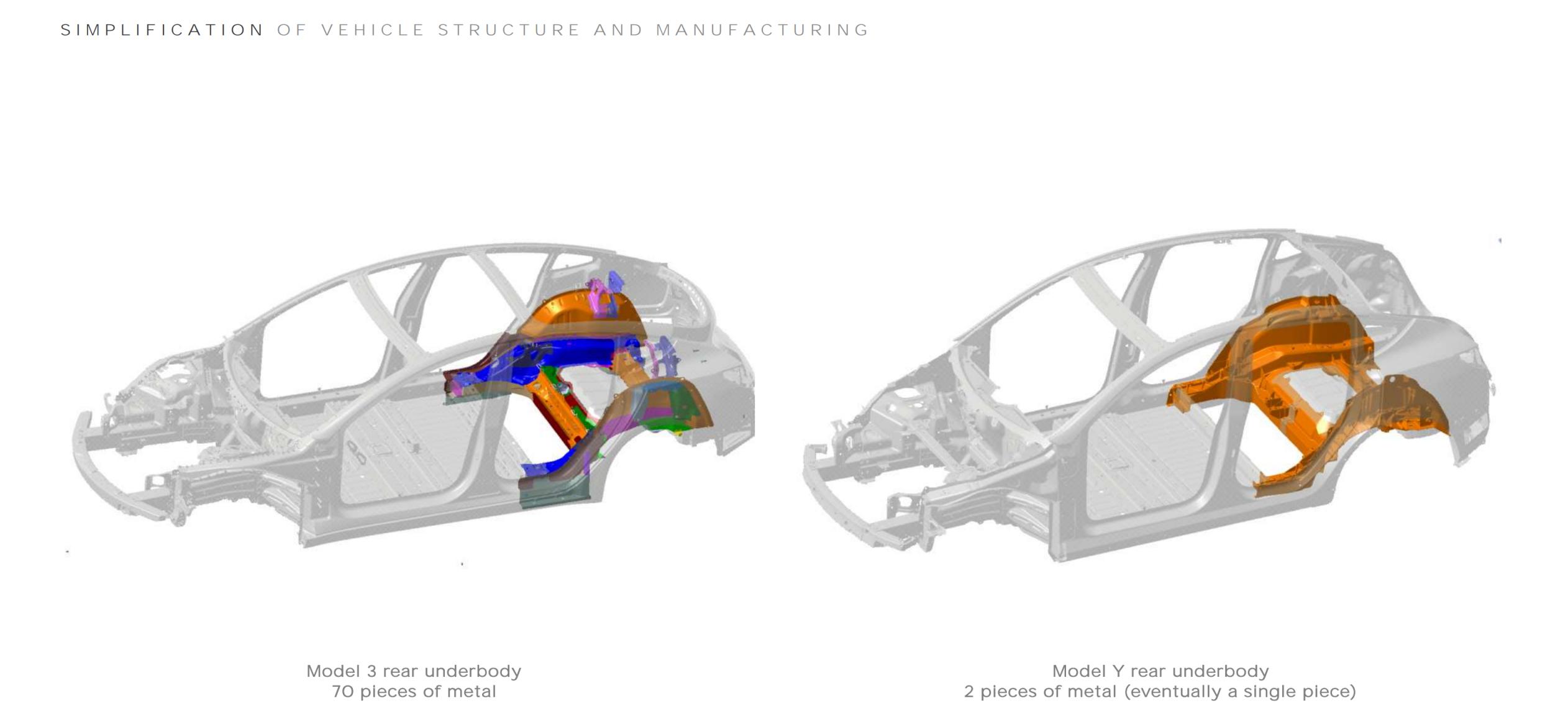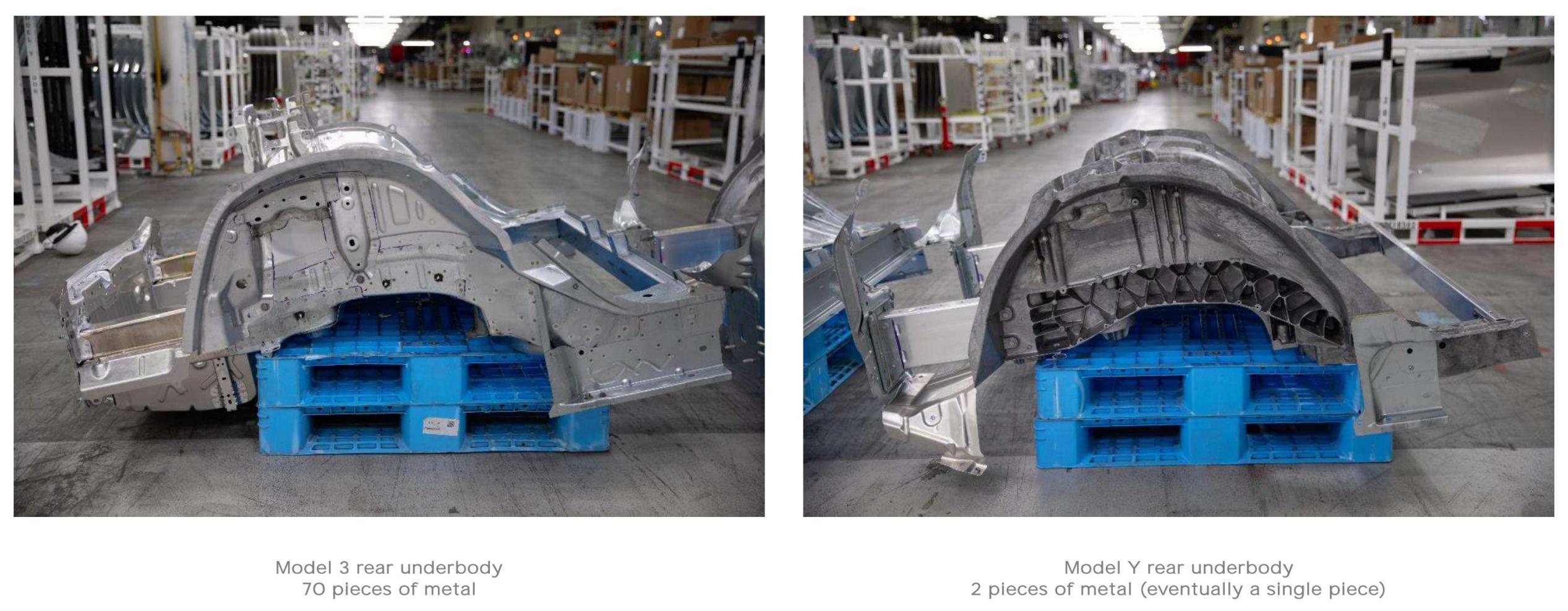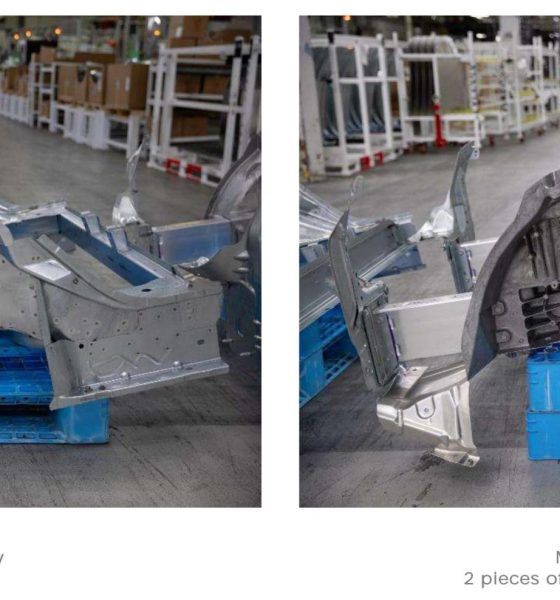Elon Musk is one of many people who predicted that the Model Y would be Tesla’s most successful vehicle to date. The vehicle not only has mass-appeal due to its crossover body style and environmental advantages, but it also is Tesla’s most structurally innovative vehicle yet. The Model Y’s underbody rear casting is one of the reasons the car has become recognized as a marvel of automotive engineering, and Musk delved into the details of the project, along with advancements the company intends to make to it by the end of 2020.
During Tesla’s Q1 2020 Earnings Call, Musk discussed the strides the electric automaker had made in the first three months of the year. After outlining Tesla’s somewhat surprisingly successful Q1 despite the coronavirus pandemic, Musk dove into the Model Y and its superior casting design compared to past Tesla vehicles.
“For Model Y, we introduced a revolutionary two-piece rear underbody casting that we are going to be making a single-piece casting later this year,” Musk said. “Meaning like essentially the rear third of the body is cast as a single piece, which is no casting of the size of complexity has never been done before.”

Automotive industry veteran Sandy Munro once said that if Tesla had contracted someone to help produce the early versions of the Model 3, the car would have immediately wiped the floor with everyone. After Munro tore down the Tesla sedan in 2018, Musk and the company realized that there were improvements needed in the build of the car. These started with later builds of the Model 3, but the more significant improvements would be passed on to the Model Y, a sibling of the Model 3 as the two vehicles share 75% of the same parts.
One of the biggest complaints Munro had about the Model 3 was the rear casting. He felt the car was “over-engineered” because it utilized around 100 parts for the rear trunk. However, the Model Y is an entirely different build, and it is something Munro has complimented during recent episodes of his teardown series.
Tesla’s idea for the Model Y was to simplify the build process and utilize fewer parts. But nobody has ever come close to using two parts for rear casting as Tesla did with the Model Y. The decrease in parts helps with the build quality, weight reduction, and production efficiency.

“So, we’re really pushing the envelope on vehicle structural, engineering, and manufacturing. I’m very excited about this approach as it allows us to reduce the weight of the cast and improve NVH. It’s better in every way essentially,” Musk said.
In the past, Munro said that the Model 3’s welding processes looked like “some kind of a science project.” This issue wasn’t present in only the rear casting on the Model 3 but also throughout the entire vehicle. However, Tesla improved on all of these issues with the Model Y, much to the approval of Munro, who has seemed very happy with the build quality of the electric crossover.
The Model Y’s improved build quality and use of revolutionary technology give all indications that the car will end up being what everyone predicted it to be: Tesla’s most successful car in its short but rich history.

News
Tesla FSD fleet is nearing 7 billion total miles, including 2.5 billion city miles
As can be seen on Tesla’s official FSD webpage, vehicles equipped with the system have now navigated over 6.99 billion miles.

Tesla’s Full Self-Driving (Supervised) fleet is closing in on almost 7 billion total miles driven, as per data posted by the company on its official FSD webpage.
These figures hint at the massive scale of data fueling Tesla’s rapid FSD improvements, which have been quite notable as of late.
FSD mileage milestones
As can be seen on Tesla’s official FSD webpage, vehicles equipped with the system have now navigated over 6.99 billion miles. Tesla owner and avid FSD tester Whole Mars Catalog also shared a screenshot indicating that from the nearly 7 billion miles traveled by the FSD fleet, more than 2.5 billion miles were driven inside cities.
City miles are particularly valuable for complex urban scenarios like unprotected turns, pedestrian interactions, and traffic lights. This is also the difference-maker for FSD, as only complex solutions, such as Waymo’s self-driving taxis, operate similarly on inner-city streets. And even then, incidents such as the San Francisco blackouts have proven challenging for sensor-rich vehicles like Waymos.
Tesla’s data edge
Tesla has a number of advantages in the autonomous vehicle sector, one of which is the size of its fleet and the number of vehicles training FSD on real-world roads. Tesla’s nearly 7 billion FSD miles then allow the company to roll out updates that make its vehicles behave like they are being driven by experienced drivers, even if they are operating on their own.
So notable are Tesla’s improvements to FSD that NVIDIA Director of Robotics Jim Fan, after experiencing FSD v14, noted that the system is the first AI that passes what he described as a “Physical Turing Test.”
“Despite knowing exactly how robot learning works, I still find it magical watching the steering wheel turn by itself. First it feels surreal, next it becomes routine. Then, like the smartphone, taking it away actively hurts. This is how humanity gets rewired and glued to god-like technologies,” Fan wrote in a post on X.
News
Tesla starts showing how FSD will change lives in Europe
Local officials tested the system on narrow country roads and were impressed by FSD’s smooth, human-like driving, with some calling the service a game-changer for everyday life in areas that are far from urban centers.

Tesla has launched Europe’s first public shuttle service using Full Self-Driving (Supervised) in the rural Eifelkreis Bitburg-Prüm region of Germany, demonstrating how the technology can restore independence and mobility for people who struggle with limited transport options.
Local officials tested the system on narrow country roads and were impressed by FSD’s smooth, human-like driving, with some calling the service a game-changer for everyday life in areas that are far from urban centers.
Officials see real impact on rural residents
Arzfeld Mayor Johannes Kuhl and District Administrator Andreas Kruppert personally tested the Tesla shuttle service. This allowed them to see just how well FSD navigated winding lanes and rural roads confidently. Kruppert said, “Autonomous driving sounds like science fiction to many, but we simply see here that it works totally well in rural regions too.” Kuhl, for his part, also noted that FSD “feels like a very experienced driver.”
The pilot complements the area’s “Citizen Bus” program, which provides on-demand rides for elderly residents who can no longer drive themselves. Tesla Europe shared a video of a demonstration of the service, highlighting how FSD gives people their freedom back, even in places where public transport is not as prevalent.
What the Ministry for Economic Affairs and Transport says
Rhineland-Palatinate’s Minister Daniela Schmitt supported the project, praising the collaboration that made this “first of its kind in Europe” possible. As per the ministry, the rural rollout for the service shows FSD’s potential beyond major cities, and it delivers tangible benefits like grocery runs, doctor visits, and social connections for isolated residents.
“Reliable and flexible mobility is especially vital in rural areas. With the launch of a shuttle service using self-driving vehicles (FSD supervised) by Tesla in the Eifelkreis Bitburg-Prüm, an innovative pilot project is now getting underway that complements local community bus services. It is the first project of its kind in Europe.
“The result is a real gain for rural mobility: greater accessibility, more flexibility and tangible benefits for everyday life. A strong signal for innovation, cooperation and future-oriented mobility beyond urban centers,” the ministry wrote in a LinkedIn post.
News
Tesla China quietly posts Robotaxi-related job listing
Tesla China is currently seeking a Low Voltage Electrical Engineer to work on circuit board design for the company’s autonomous vehicles.

Tesla has posted a new job listing in Shanghai explicitly tied to its Robotaxi program, fueling speculation that the company is preparing to launch its dedicated autonomous ride-hailing service in China.
As noted in the listing, Tesla China is currently seeking a Low Voltage Electrical Engineer to work on circuit board design for the company’s autonomous vehicles.
Robotaxi-specific role
The listing, which was shared on social media platform X by industry watcher @tslaming, suggested that Tesla China is looking to fill the role urgently. The job listing itself specifically mentions that the person hired for the role will be working on the Low Voltage Hardware team, which would design the circuit boards that would serve as the nervous system of the Robotaxi.
Key tasks for the role, as indicated in the job listing, include collaboration with PCB layout, firmware, mechanical, program management, and validation teams, among other responsibilities. The role is based in Shanghai.
China Robotaxi launch
China represents a massive potential market for robotaxis, with its dense urban centers and supportive policies in select cities. Tesla has limited permission to roll out FSD in the country, though despite this, its vehicles have been hailed as among the best in the market when it comes to autonomous features. So far, at least, it appears that China supports Tesla’s FSD and Robotaxi rollout.
This was hinted at in November, when Tesla brought the Cybercab to the 8th China International Import Expo (CIIE) in Shanghai, marking the first time that the autonomous two-seater was brought to the Asia-Pacific region. The vehicle, despite not having a release date in China, received a significant amount of interest among the event’s attendees.









